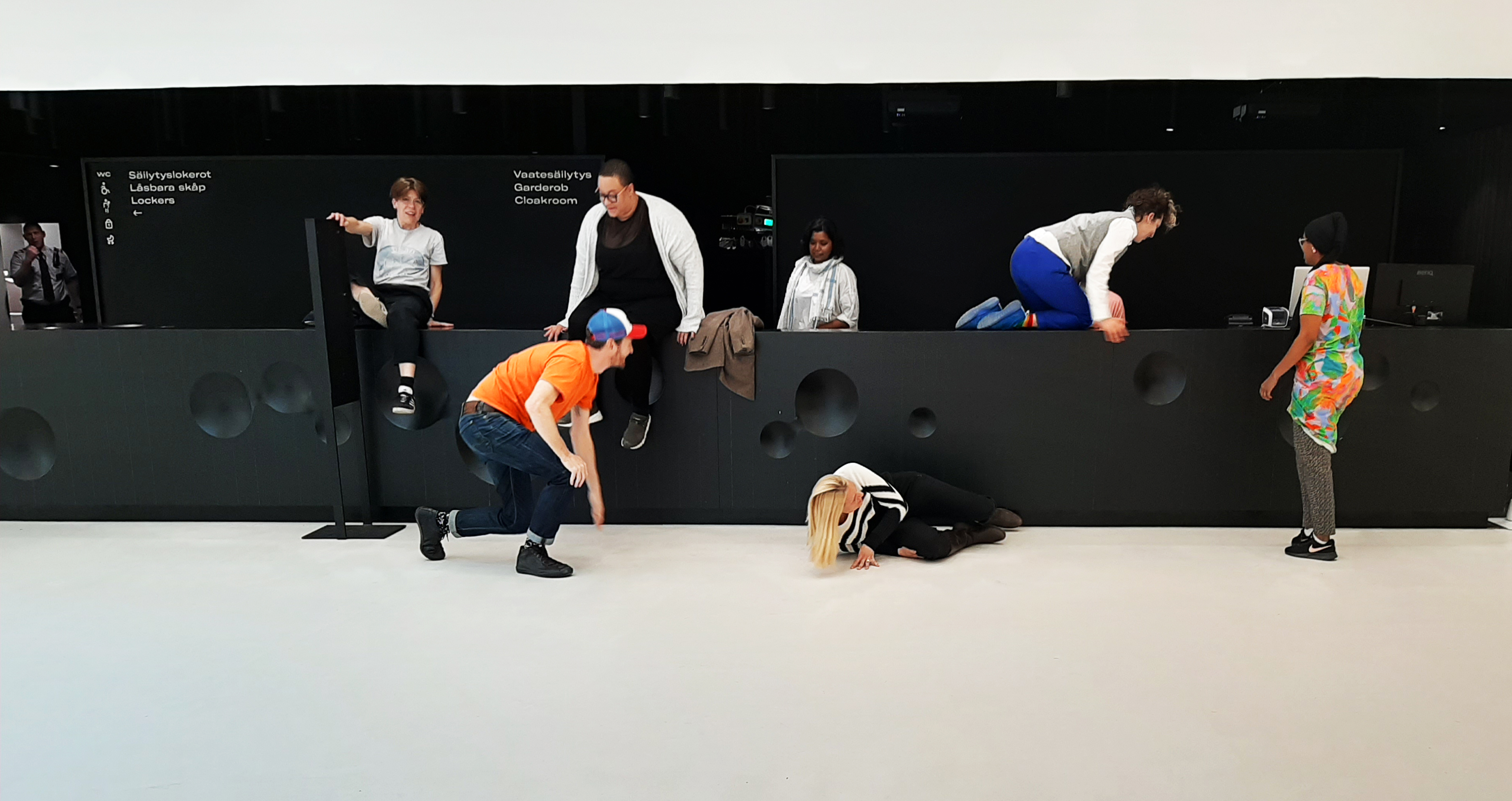

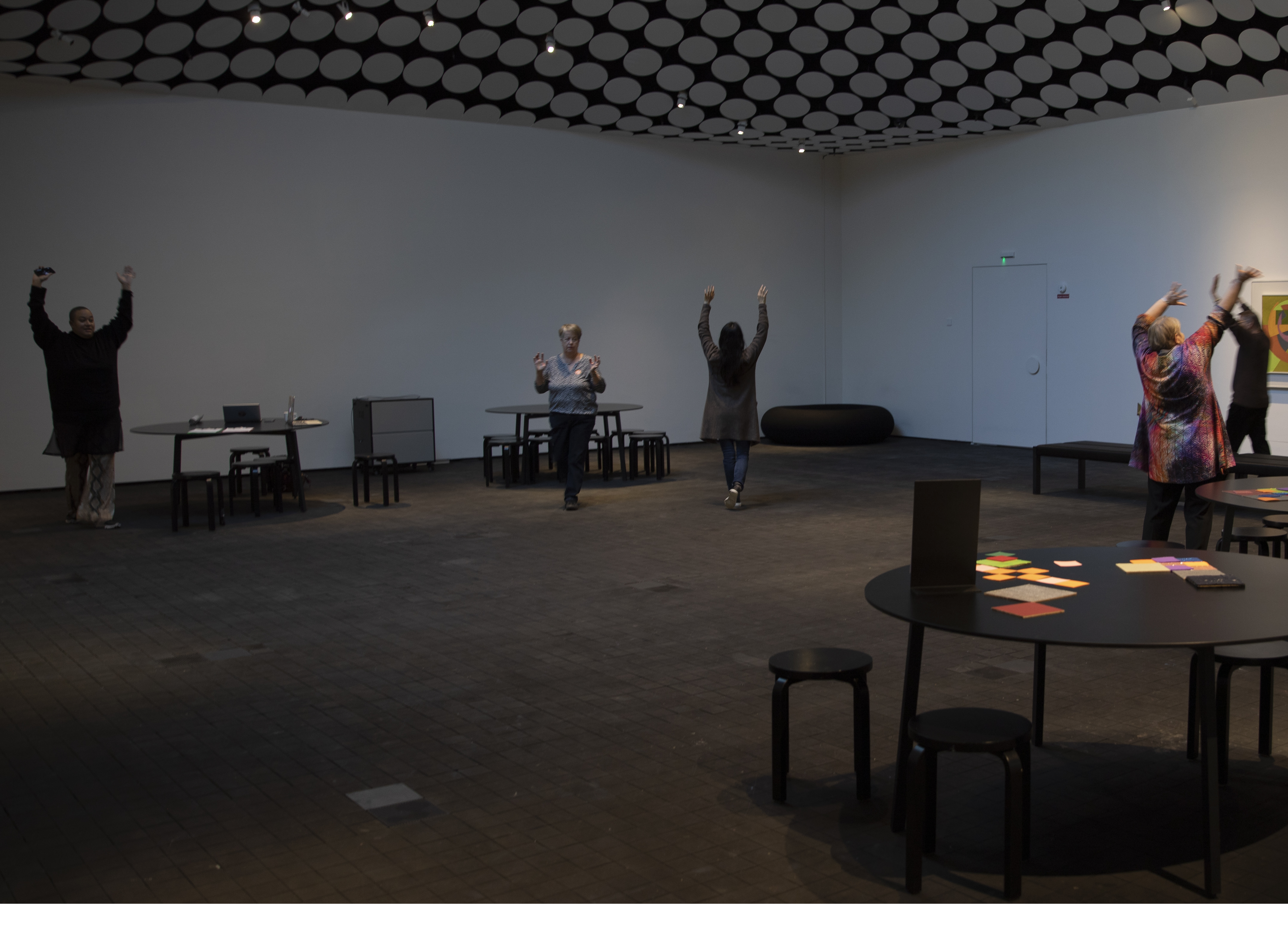
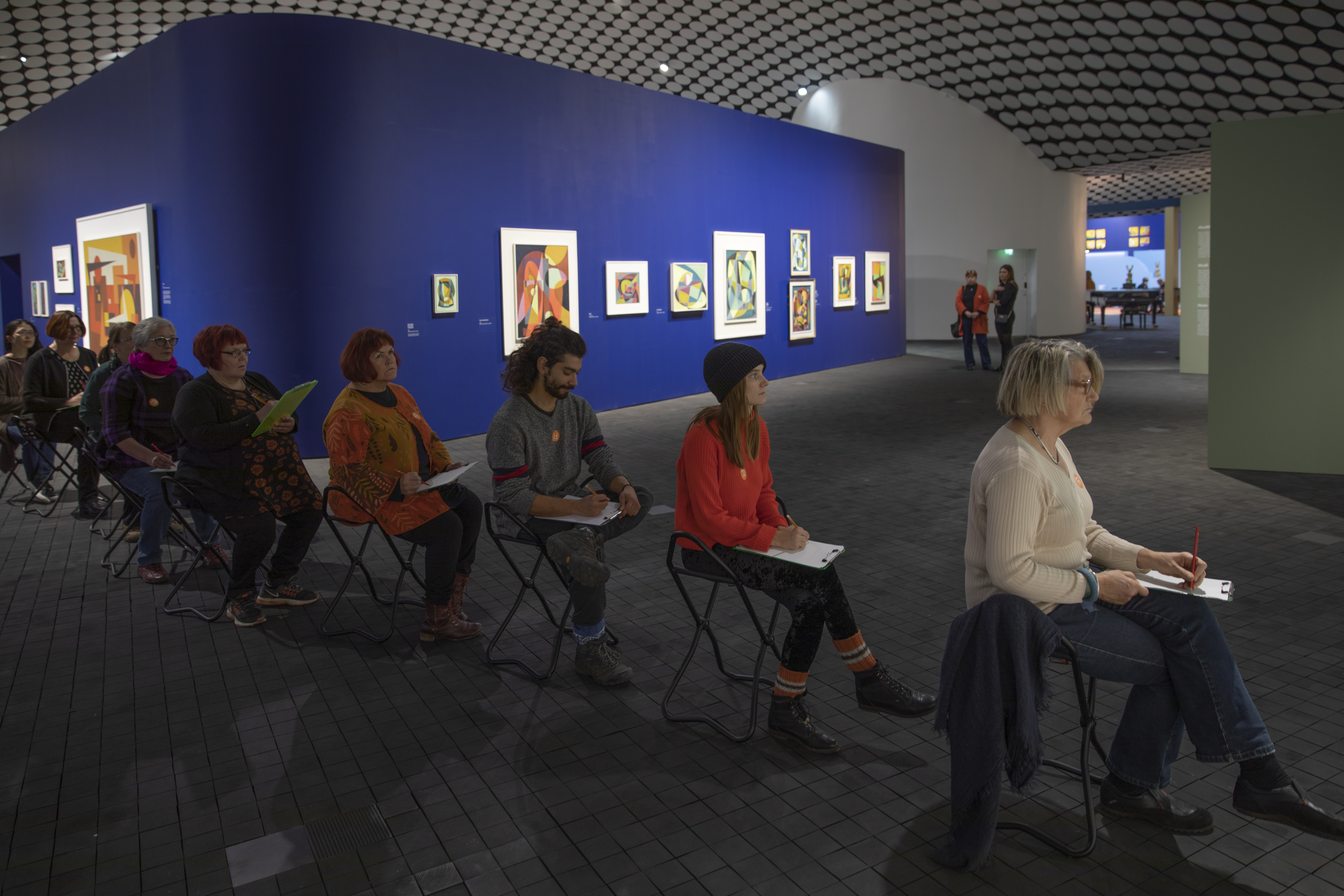

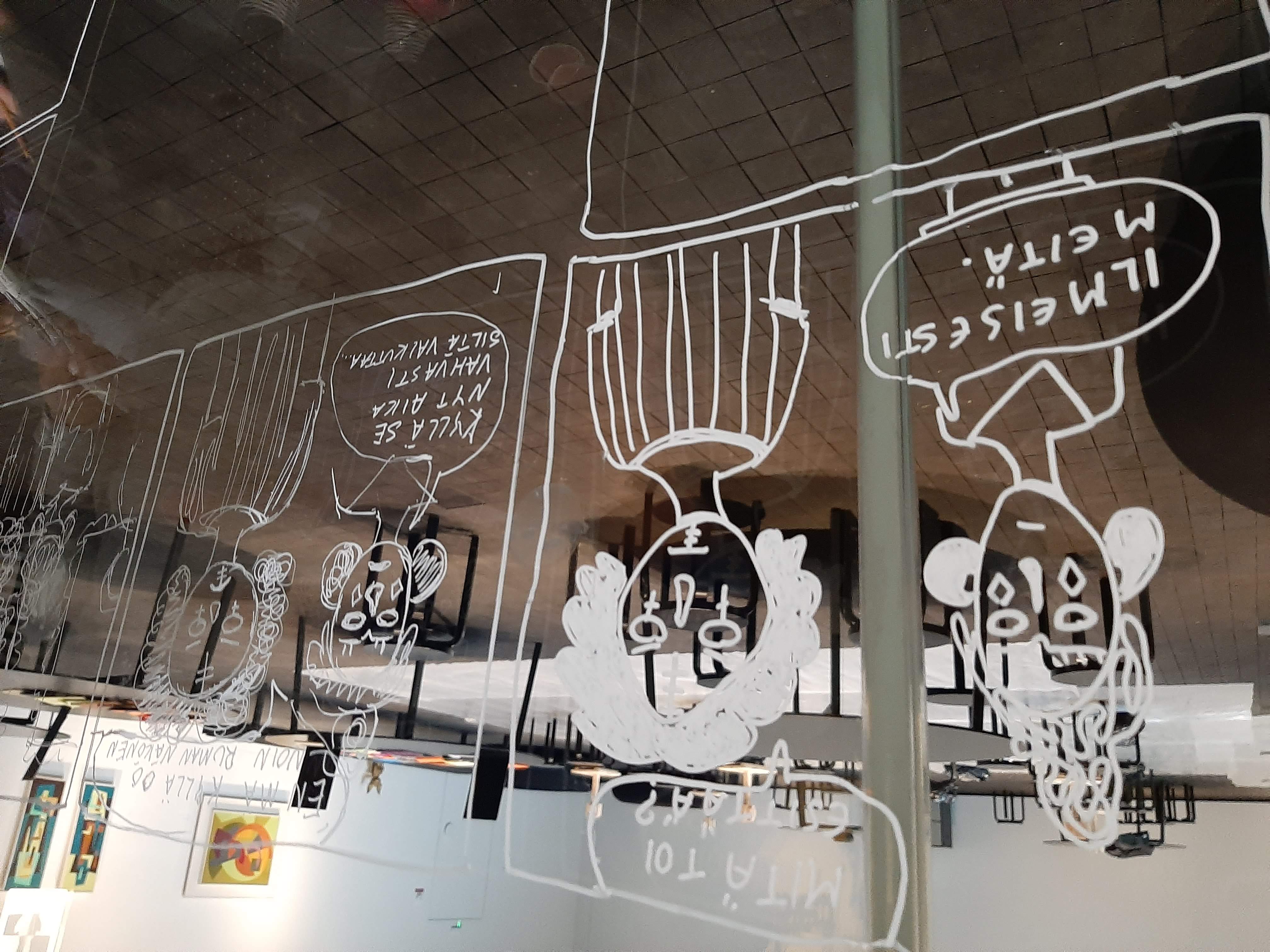
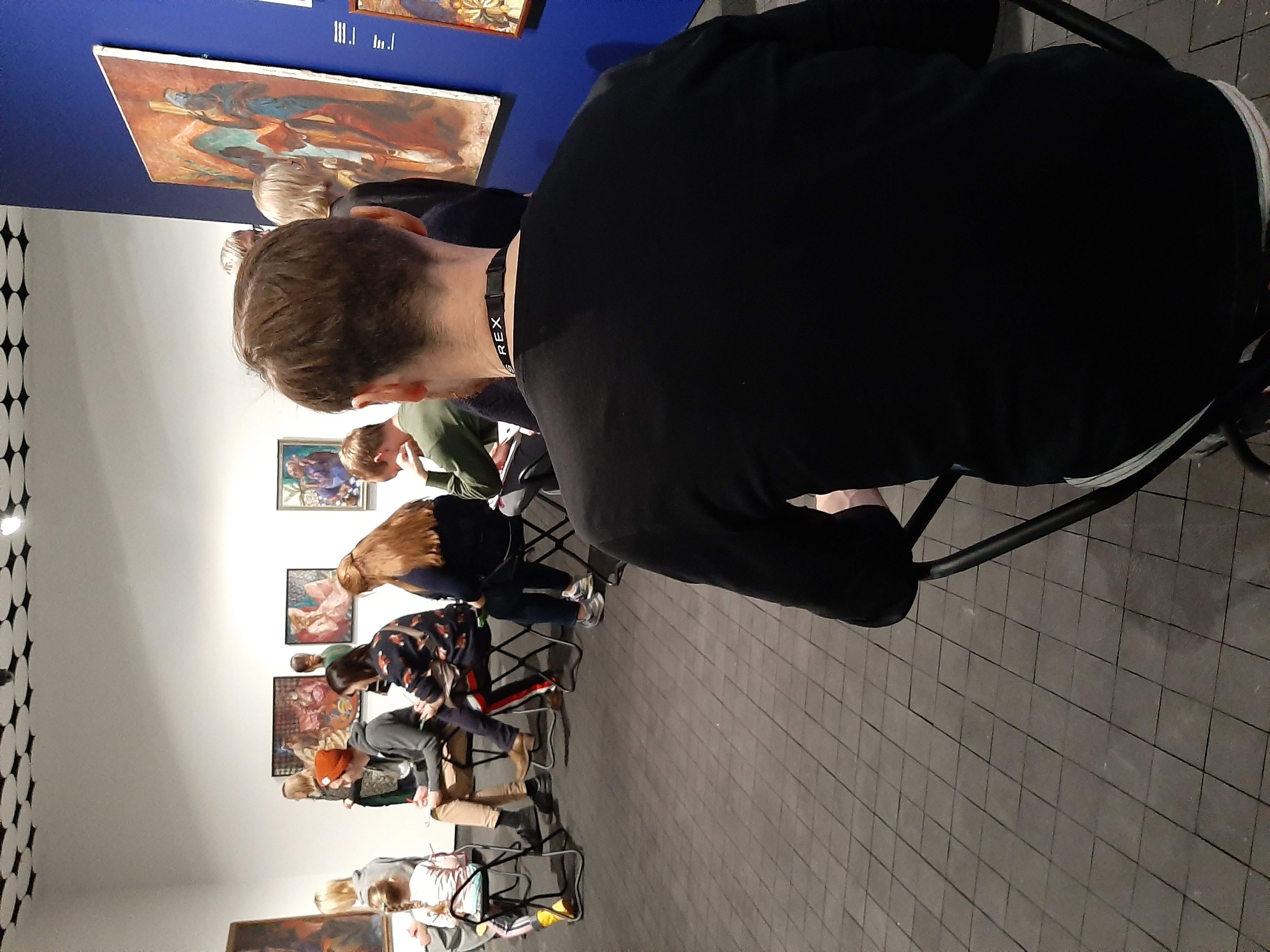






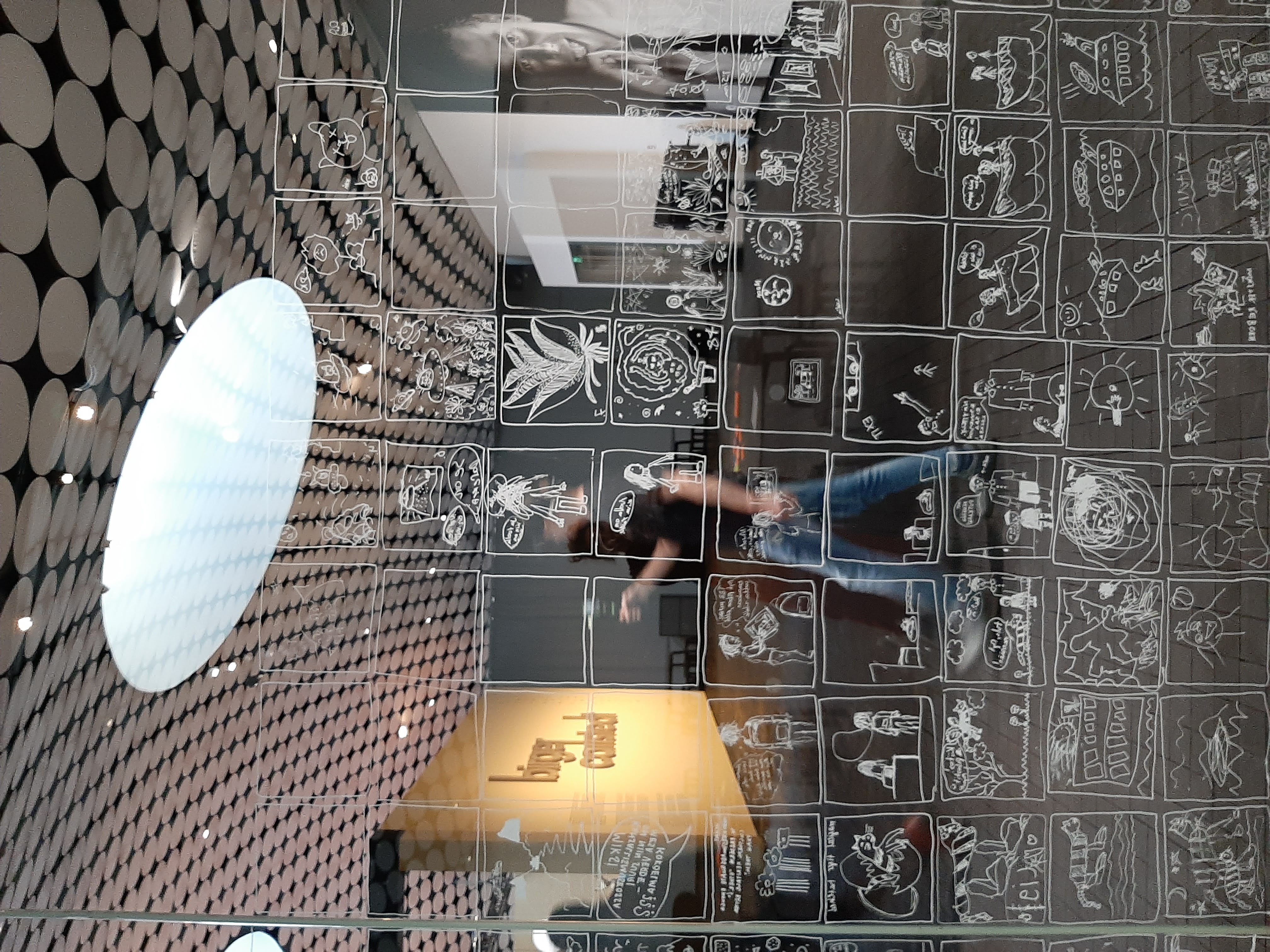
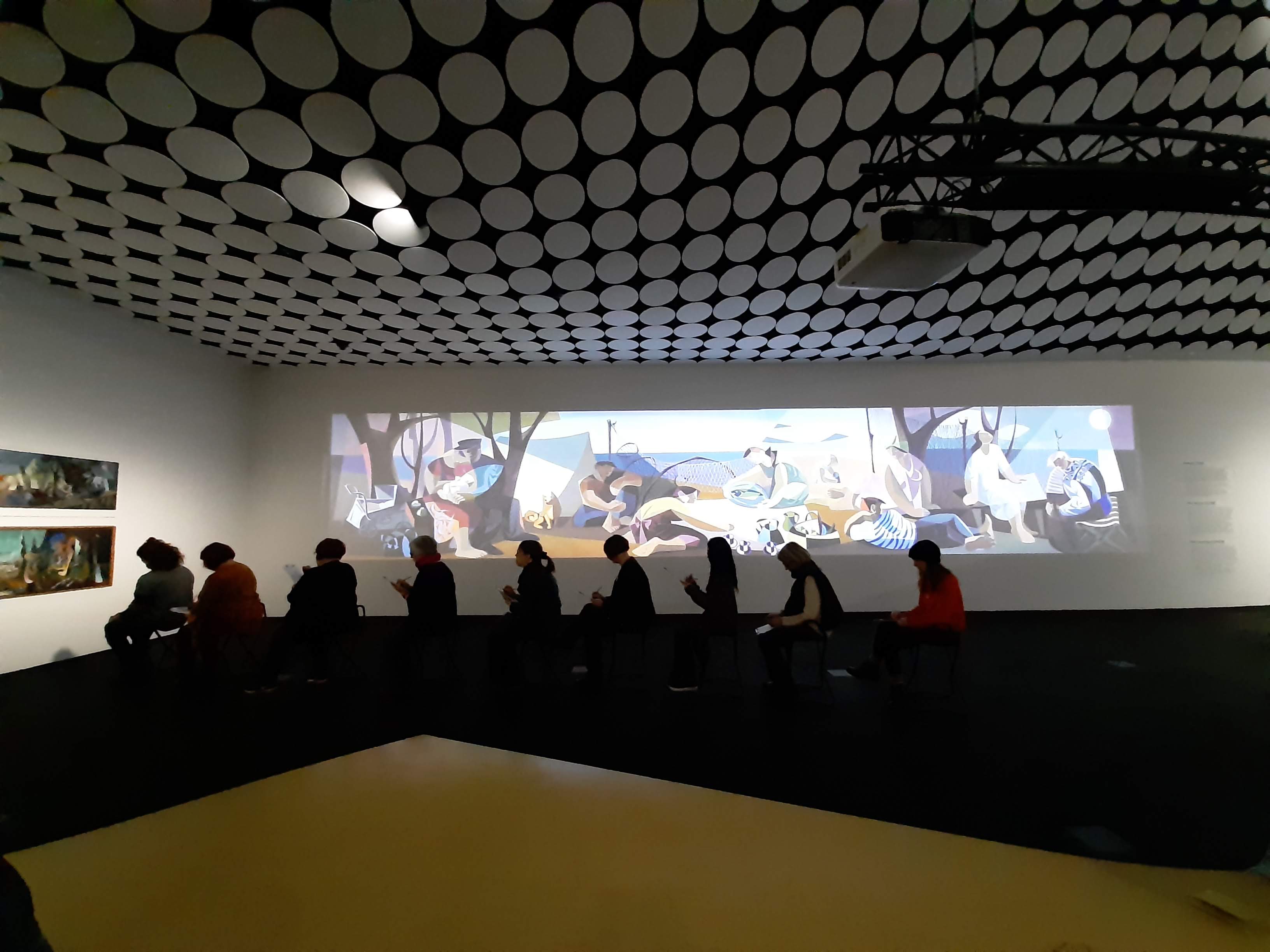
Art school has its known grammar, constructed from endless micro (lingual, spatial, corporal) gestures that mark out a normative playing field of inclusion and exclusion. While these modes of education don’t (fully) represent a possibility of belonging or determine possibilities of meaning-making, they are seen or heard as ‘proper’ art education, and what is not.
‘The schoooool With Many Holes’ is a proposition for a short-lived school that parasite in a museum setting, constructed by mimicking instructional sessions, and using both museum and school assumed infrastructures. This project aims to diffuse the traditional dichotomy between a training-institution and an exhibiting and collecting institution, the museum’s administrative and liminal spaces become a host for pedagogical sessions (or performances of thereof). The school will be organized by units, which will be located in various spaces of the museum, each reflects on art school terminology: from ‘figure drawing’, ‘art history ‘lecture’ to ‘tutorials’. Camouflaged as instructional sessions, each unit acts as a performative piece that subverts its original convention. Developed collaboratively with other makers and thinkers, the art school becomes both the research subject and the medium, and offers a close look at concepts such ‘professionalisation’, ‘schooling’, ‘useful’ and ‘causal’ knowledge, and the need for ‘final presentation’. I will ask what are the structural and infra-structural realities that being communicated when the (algorithmic-based, experience-led, inclusivity seeking) museum become a host-site for pedagogical processes? And what can possibly happen when a set training methodologies and non-written art school regulation are publicly observed?
Ultimately, such par-siting practice might only serve to deny the necessary negotiation of art-school commonality as a prerequisite for radical practices, welcoming other encounters, that will immerge from the failing attempt to communicate externally with whom that find such grammar incommunicable. Bound to principles of preference and familiarity, the gesture of shifting locale and a mode of knowledge production might urge the need to develop some new punctuations of cohabitation.
Warda Ahmed: Decolonial talk
Let’s make a comic book on the wall. From starting points created by the artist, the cartoon continues horizontally and vertically with new understandings and versions that will be taken into the common discussion. The formation of the cartoon is guided by the artist’s introduction, the characters produced by the artist, and references to art history. The aim of the workshop is to arouse wondering, discussion, interest in cartoon technique and empathy arisen through understanding.
James Prevett: Transitional Modelling
Working in pairs, we create two-faced Janus heads guided by timed exercises. Participants will work with clay to model the face of their partner whilst at the same time their partner models their own face to the other side of the double-faced head.
Minna Henriksson: Art in the Service of the Nation — Or why did Birger Carlstedt reject abstraction in early 1930s?
This art history lecture is a performative intervention that will take place in the exhibition rooms of the Birger Carlstedt exhibition. The topic of the lecture derives from the fact that in early 1930s Carlstedt was strongly discouraged from pursuing with abstract paintings. The main art critics in Finland, Onni Okkonen, Ludvig Wennervirta and Edvard Richter accused him of mimicking international art trends, and ignoring what Finland had to offer in terms of subject matter for artists. In the critics’ opinion artists in Finland should draw themes from the Finnish nature and paint with the colour palette found there, instead of copying, in bright colours, influences from Russian constructivism and De Stijl in the Netherlands. Only in 1950 Carlstedt went back to the language of abstraction, and this time he was allowed to stay there.
This lecture-performance is about art caught in between demands for nationalism and strives for internationalism. It is an invitation to take a critical look at how the history of art is being taught, in relation to the history of a nation.
Vidha Saumya: Academic Quarter Sandwich
At the ‘Schoooooool With Many Holes’, we will prepare sandwiches during the ‘Academic Quarter’ – the quarter-hour / 15 minute pause between the defined start time for a lecture or lesson and the actual starting time. Inside the Le Chat Doré café, we can think of the relation between our appetite for Art and the domestic action of preparing a sandwich. What does each ingredient going into our sandwich mean? And, how can we “sandwich” these ingredients to make our ideal sandwich? Together, we will share lots of ‘food for thought’ and locate ourselves inside the museum café, where we will prepare a sandwich and eat it too.
Tellervo Kalleinen: Art Critic Class
One of the basic elements of art teaching is art critic, during which art teachers and other students give feedback about art pieces of students. Also in Tellervo Kalleinen’s art critic class the participants give feedback about each others works. The only odd thing is, that the pieces are invisible. That, however is not an obstacle for a passionated feedback discussion!
Caroline Suinner: Connection workshop
In this workshop we investigate how to connect, hear and to be heard. With movement an observation we try to create space to communication on a human level, stripping down from the daily routines and roles we might hold. We often don’t recognize it, but for some people entering education system, new institution or a project might feel like an impossible challenge or there might be a possibility that one feels unseen thru all school years. We need to bring interaction as one of our subjects in the school system.
Ofri Cnaani: Drawing of Drawing Sessions
Drawing of Drawing Sessions is a participatory performance rooted in the conventional method of sketching sessions in historical museums. Our unit will begin with one person sitting in front of Birger Carlstedt’s piece and drawing it; A short distance behind, a second person will draw the first person drawing the object; forming a line of drawers of drawers, turning the museum mise-en-scene into a pedagogical mise-en-abyme.
The forty minutes long performance will include several canonical drawing assignments, always with a little twist. After each assignment, the first in line will move to the end, turning the performance itself into a drawn human line that is constantly moving through its surroundings and shifting its focal point and challenges the conversation between the concepts of skill, art training, subjectivities, and the act of seeing. One is welcome to join or leave as they wish.
Ofri Cnaani: How To Use The Internet
When the Internet was a very new “thing” art students and their teachers were grappling with the question, is computer art (a.k.a net art) a new genre? And, if yes, how do we study the internet or make art about it? Fast-forward 25 years, as most content and communication is done via apps, ‘how to use the internet?’ is very much a question. Are we Unlearning how to use the internet? In Ofri Cnaani’s ‘art and internet’ class, participants will “log-off” in order to figure out together what and where is the internet? and, how it can be used to make ‘art’?